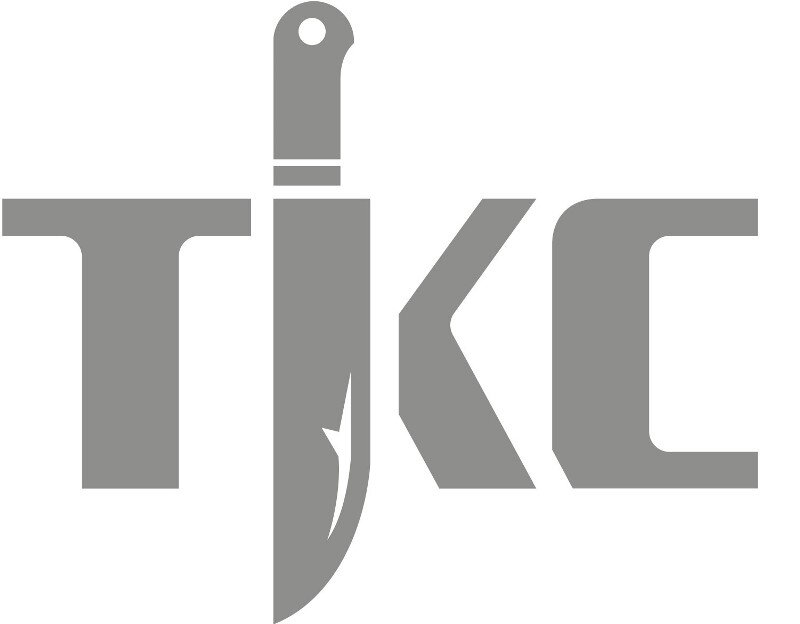All about knife edges (yes there are different types)
Next time somebody tells you they’re on a knife edge, maybe don’t ask them what type. But there are in fact many different types of knife edge, so it wouldn’t (technically) be a silly question.
The following is a quick – and (we hope) easy to follow – guide to knife edges.
Before getting in to the different types, it’s worth talking a little about the lingo of knife edges. The most important thing to note is that when someone refers to a knife edge angle of, say, 20 degrees, they are in fact describing the angle of the knife edge from the centre of the knife to the edge – this is called the ‘edge angle’. With a symmetrical knife edge (see below) there will be an identical angle on the other side of the blade, making the angle between the two sides of the edge 40 degrees. This ‘total’ angle is referred to as the ‘included angle’.
In very general terms, the narrower the angle, the sharper the knife, but of course the tradeoff is that a sharper blade is more prone to damage (see how I.O.Shens combine the best of both worlds here). European and German kitchen knives are normally given a 20 degree (ie 40 degree included angle) edge, which makes them not especially sharp, but quite durable. In contrast, Japanese style knives (such as our own I.O.Shen series) generally have a 10-15 degree angle edge (ie 20-30 included angle with a symmetrical blade), which makes them pretty damn sharp.
So – let’s have a look at those different types of knife edges and what they’re best suited for. Here’s the full list…
1) V edge (aka ‘flat grind’, ‘high flat grind’ or ‘Scandinavian grind’)
2) Convex edge
3) Compound bevel
4) Hollow edge (similar to concave)
5) Chisel edge (aka ‘single bevel’)
6) Asymmetrical
1) V edge
This is the commonest edge type for kitchen knives. The ‘V’ describes the cross-section appearance of the blade – flat on both sides coming to a point. This type is relatively easy to create when sharpening a knife and tends to last longer than other finer edge types.
2) Convex edge
This is similar to the V edge except that the surfaces are curved as they come to the point. In cross section it looks a little like a bullet. It is stronger than the V edge but still sharp. Multiple sharpenings will tend to change this edge into the standard V edge.
3) Compound bevel (‘bevel’ is another term to describe the edge)
Again, based on the V edge, this type of edge introduces a second section near the tip of the blade where the angle is steeper. This type of edge protects against the edge ‘rolling’ or cracking, so maintaining sharpness and durability. Hard to spot with the naked eye. Sometimes this type of edge can incorporate a convex edge in the final section, giving the blade a cross section that resembles a bullet sitting in its cartridge casing (if you know what we mean).
4) Hollow edge
The opposite of the convex edge, the sides with this type of edge are hollowed out a little. The resultant blade is very sharp as it’s thin, but is more prone to damage. Often used in hunting and outdoor knives.
5) Chisel edge
This is the archetypal Japanese style blade, where, like a chisel, one side of the blade has an angle and the other side is flat. It is used primarily in knives for preparing sushi and sashimi, such as the Santoku and Nakiri. The edge angle is generally 20-25 degrees, and since the other side has no angle at all, the included angle is the same – much sharper than European/German style knives. Chisel edge knives are the only ones where it matters whether you are left or right handed – make sure you get the right one.
6) Asymmetrical
Asymmetrical simply describes where the edge on one side is different to the one on the other. Even though this is also the case with chisel edge blades, they are categorised separately. Asymmetrical edges can have, for example, a flat surface on one side and convex or concave on the other, or with one side of the edge starting at a different point on the blade to the other. Common asymmetrical edge types include the asymmetrical V edge and asymmetrical convex edge.
A note on sharpeners
Most sharpeners will reproduce only the most common edge profile – the V edge. The newest electric knife sharpener in our Nirey range – the KE-500 – will produce both European and Japanese (ie chisel) edges.
More Info
The meaning of sharp – how to check if your chef’s knife needs sharpening
The rise and rise of the Japanese style chefs knife
How an I.O.Shen knife is like a Samurai sword







